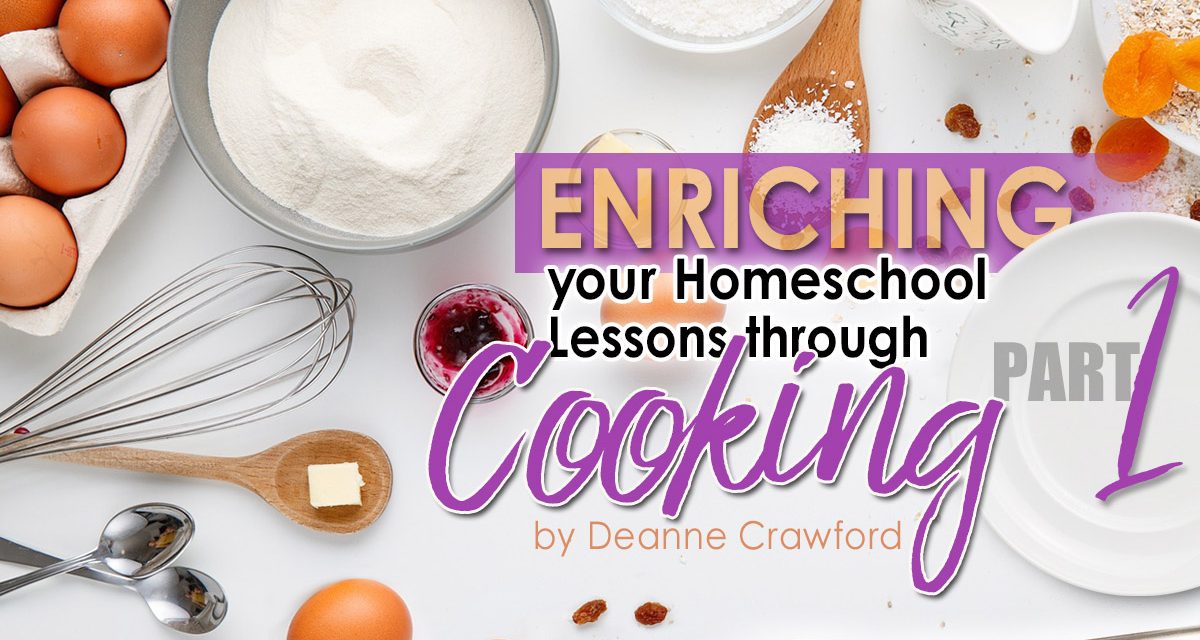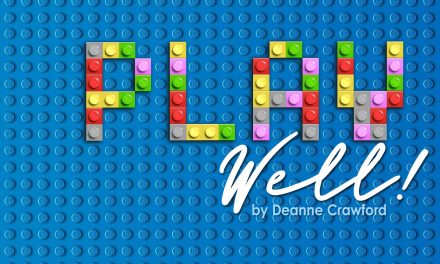Let’s face it. We all love food…even picky eaters have that one food they will ask for again and again! Research has shown that children learn, really learn and retain knowledge, when they actively participate in what is taught. But there are countless other benefits that come from incorporating recipes and cooking in your homeschool routine. Cooking together promotes family relationships, self-confidence, and healthy eating habits. Not to mention the practical application of mathematics, vocabulary development, and social skills. I might also add that it is fun!
In this two-part series, let’s look at mom and child-friendly ways to incorporate cooking into the homeschool day. One of the easiest places to start is adding cooking to your math lessons. Is there any better way to practice addition of whole numbers and fractions as you double a recipe? Or maybe you have a favorite holiday or family recipe that feeds a large group of people, that you would like to enjoy with your family. Ask your children to cut the recipe in half or even a third. Depending on their ages, these types of modifications are practical, easy to implement, and work with any recipe.
As my children grew, I loved to give them more challenges in the kitchen. For example, I would set out various baking ingredients (flour, salt, baking soda or powder, sugar, eggs, vanilla, etc.) and challenge them to create a cake or cookies using some or all the ingredients. This activity provided an excellent introduction to the importance of following directions. Yes, I am a notorious modifier of recipes, but to have the ability to effectively modify a recipe is based on a foundational understanding of what makes a recipe successful. This simple activity taught them the value of following directions, creativity, and problem solving.
As children grow beyond using basic math skills in the kitchen, take the opportunity to teach them planning and budgeting skills. Using the internet or a cookbook, ask them to find a new recipe they want to try. Once selected, have them check the pantry and make a list of the ingredients or cooking supplies they will need to prepare the recipe. At this point, give them a budget to stay within. You can either do this by looking over the list to get a general idea of costs and set the budget or have them estimate what they think it will cost to create the recipe. With this budget in mind, head to the store together to make purchases. Try to stay within the estimated budget. A great way to reinforce the value of budgeting is to allow children to keep any money left over!
Cooking is also an excellent way to develop geometry concepts. Explore this by purchasing a variety of fresh fruits and vegetables. Have children cut the produce in half to look inside for patterns. What do they notice? (If you need some help with this activity, check out Geometry Matters’ helpful illustration or the Smart Food Project’s Geometry in Food.) Once your fruit and vegetables have been cut and examined, take the remaining sections, and create a patterned dish to share. This can be something as simple as a fruit bowl or as elaborate as a veggie or fruit pizza.
From these shared experiences in the kitchen, your child may have discovered a love for cooking and may be thinking about a career in the culinary arts. HMH offers a great video lesson that focuses on math in the culinary arts. Check it out here.
Hopefully, this has inspired you to include cooking together as part of your day. Next month, we will focus on teaching science and history through food. In the interim, explore more with our video, Cooking in the Classroom. This hands-on workshop provides numerous ideas and recipes that will enrich your cooking lessons. ~ Deanne





